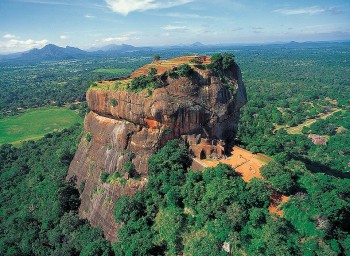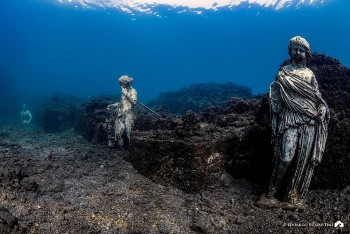Santuario Madonna della Corona: A Dangerous and Irresistible Secluded Paradise
| Sigiriya Rock Fortress: The Acient Masterpiece of Sri Lanka | |
| Ancient Ruins: Rome's Sinful City Sunken At The Bottom of The Sea | |
| Top 10 Most Luxiourious Trains In The World |
You will find it a stone’s throw away from Verona and just off Lago di Garda – Italy’s largest lake. Much more than providing instagrammable fodder and an excuse for social likes, the Sanctuary of Madonna della Corona (in English: Our Lady of the Crown) is a special place to visit and explore. It brings you closer to the people of this land, their history, their traditions, and beliefs. Above all, it’s a testament to their spirit as building and maintaining a sanctuary halfway up a steep cliff face is a sign of devotion that nowadays we rarely seem to cultivate in our busy daily lives.
The history of Santuario Madonna della Corona
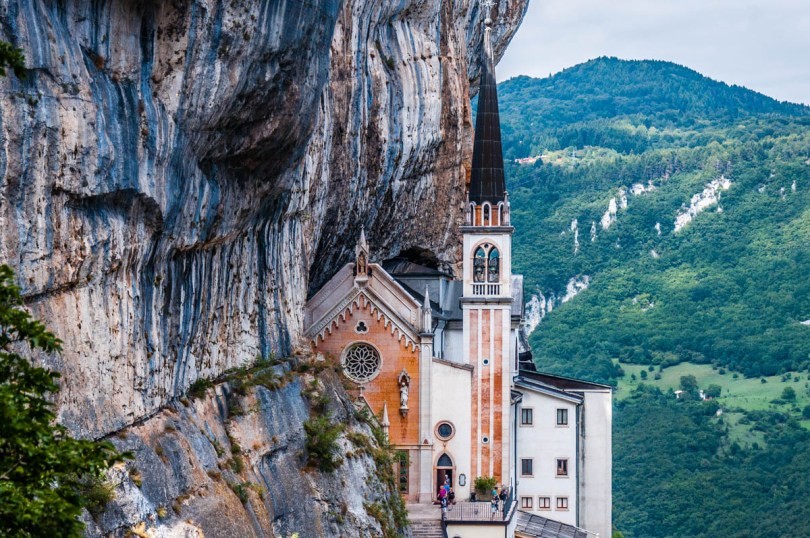 |
| Photo: Rossiwrites |
The church does not actually hang on the sheer face but instead sits on a thin rock shelf that can only be reached by a thin path. Originally the secluded shelf was home to a hermitage where holy men could come for silent reflection, completely removed from the rest of the world. The actual church was built in 1530 and the site became a chapel for anyone wanting to pay pilgrimage and contemplate the nature of God in peace. The main chapel saw a number of changes over the ensuing centuries growing larger and at one point having a larger church built over the existing one.
Built right into a vertical cliff face on Italy’s Mount Baldo, the Santuario Madonna della Corona (Sanctuary of the Lady of the Crown) looks as though it is nearly suspended in mid-air.
The church does not actually hang on the sheer face but instead sits on a thin rock shelf that can only be reached by a thin path. Originally the secluded shelf was home to a hermitage where holy men could come for silent reflection, completely removed from the rest of the world. The actual church was built in 1530 and the site became a chapel for anyone wanting to pay pilgrimage and contemplate the nature of God in peace. The main chapel saw a number of changes over the ensuing centuries growing larger and at one point having a larger church built over the existing one.
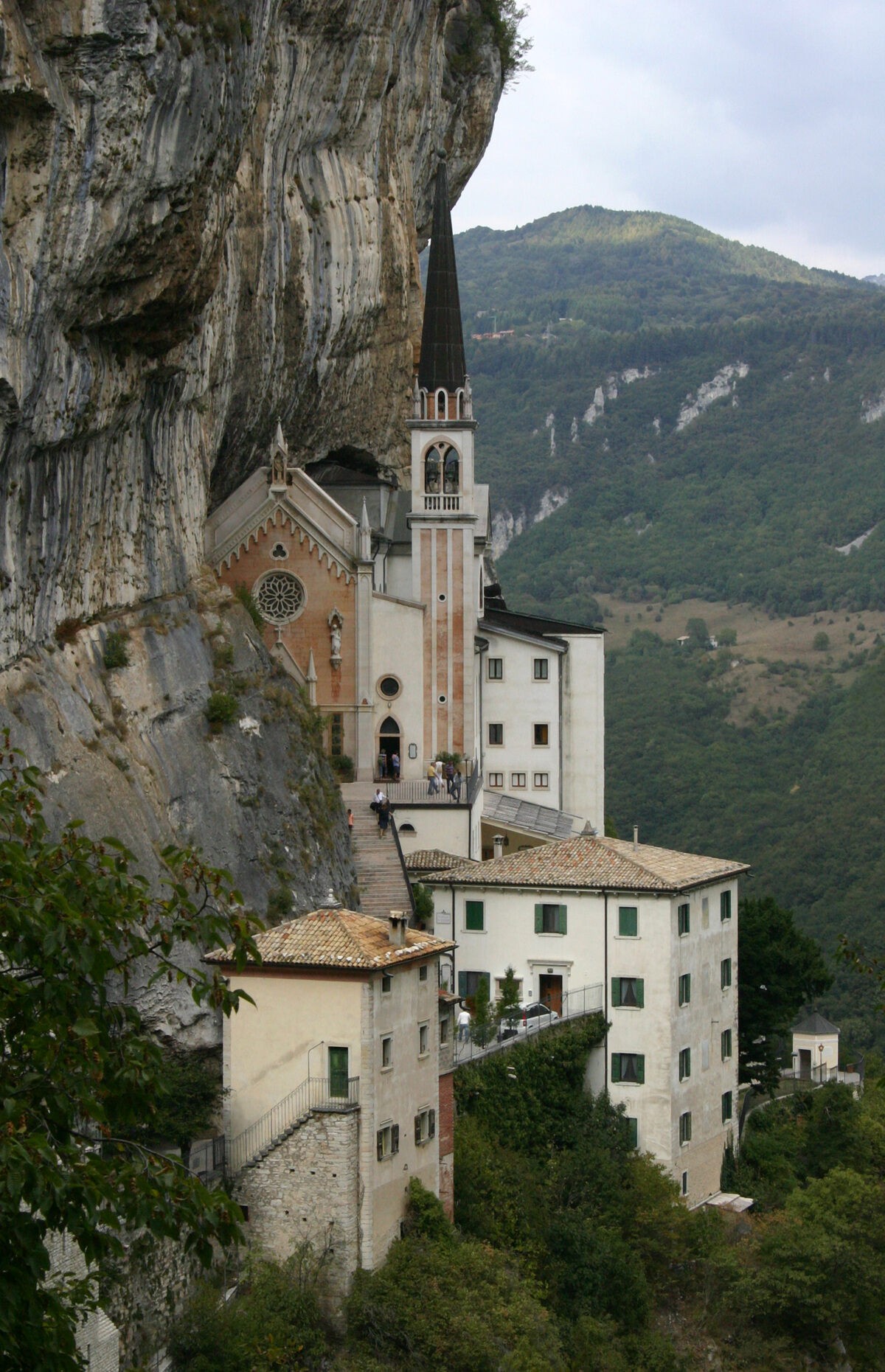 |
| Santuario Madonna della Corona FRISIA ORIENTALIS |
Thanks to its relative inaccessibility the church was never totally destroyed or desecrated and managed to survive into the 20th century, crumbling a bit but intact. In the 1970s an Italian architect tore down much of the aging structure and built it back up, taking care to retain as many important artistic flourishes as possible.
Known initially as the Sanctuary of the Madonna of Monte Baldo, after the arrival of the statue of Pieta in 1522, it was referred to as the Sanctuary of the Madonna Addolorata (in English, Our Lady of Sorrows). Nowadays, the name Madonna della Corona is the most widely used one. They say that it was inspired by the crown that the mountain peaks form around the sanctuary.
It’s interesting to note that the Sanctuary of Madonna della Corona is the end point of the so-called Cammino dei Due Santuari (in English, Path of the Two Sanctuaries). The path begins from the Sanctuary of Pieve di Chiampo, crosses seven valleys of the Venetian Pre-Alps and ends at the Sanctuary of Madonna della Corona. This pilgrimage takes you through lush forests and fields dotted with small chapels which are a testament to the religious and spiritual traditions and fervour of the locals.
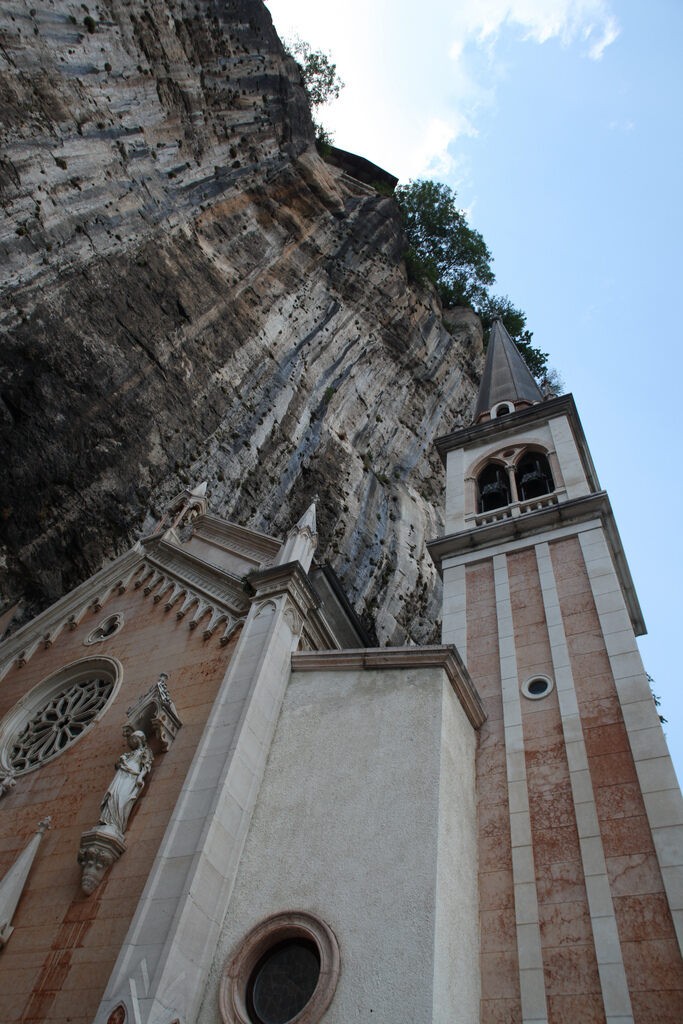 |
| Santuario Madonna della Corona BRUNO CORDIOLI |
“Suspended halfway between Heaven and Earth”
Visiting the Sanctuary of Madonna della Corona is a touching and memorable experience. It also requires some physical strength if you decide to hike all the way to it rather than taking the small shuttle bus. Most importantly, a visit to it gives you a chance to appreciate the stunning beauty of the place – the incredibly tall mountains on the vertical slope of which it is built, the valley stretching down below, the river Adige meandering through, and then the salmon-coloured church peaking behind the cragged rocks while its bell tower is forever reaching for the sky above.
There are two main ways to reach the Sanctuary of Madonna della Corona. Choosing one over the other will depend on how much time you have on your hands and how physically active you want to be getting there.
1. Pilgrim’s Path (also known as Hope’s Path) – this is the traditional (and until recently, the only) way to reach the Sanctuary of Madonna della Corona. It’s a hiking path which starts from the small town of Brentino Belluno in the Lagarina Valley in the province of Verona and takes you all the way up to the sanctuary. The path is about 2,425 m long. It includes 1540 steps. It has an elevation of 600 m and, allegedly, it can be covered in about two hours.
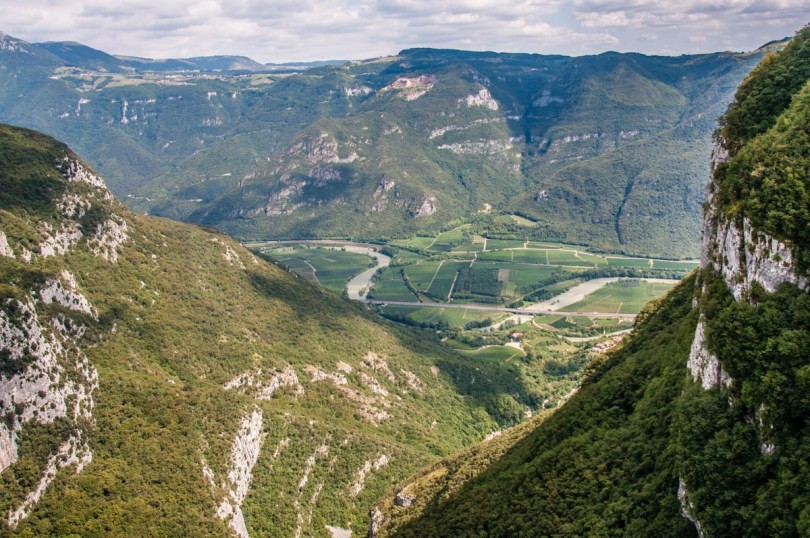 |
| Photo: Rossiwrites |
2. Reaching the Sanctuary of Madonna della Corona from Spiazzi – Spiazzi is a small town at a height of 850 m above sea level. The road taking you to Spiazzi offers fabulous views over the nearby Lago di Garda – Italy’s largest lake. It is best to reach Spiazzi by car. Otherwise, there is a public bus that can take you there from the nearby towns of Garda, Bardolino, and Cisano. Bear in mind that the bus only runs between June and October.
Once you reach Spiazzi by car, you need to park in the village. There is a large car park at the start of the road leading down to the Sanctuary of Madonna della Corona. Bear in mind that you can’t drive down to the sanctuary itself.
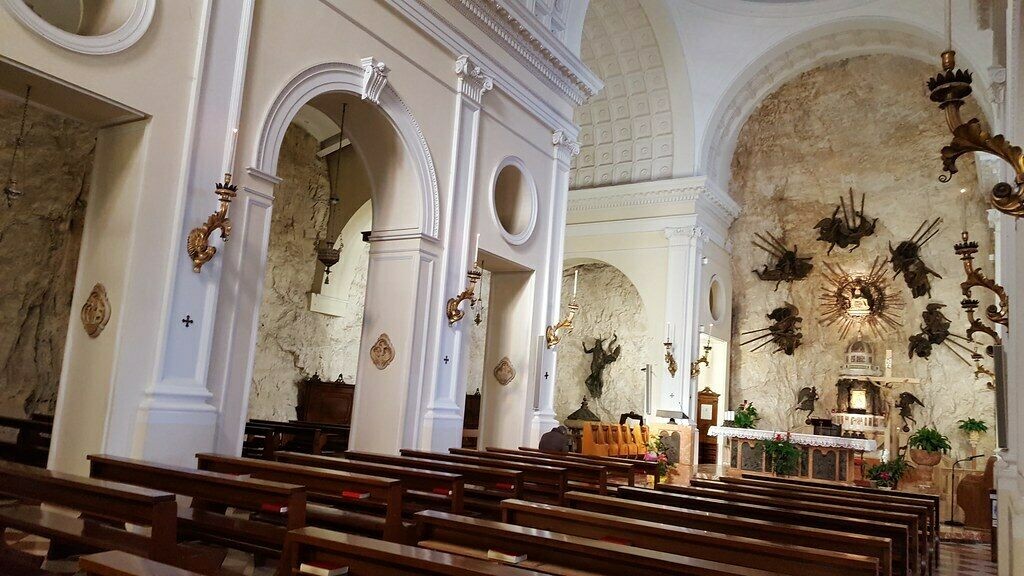 |
| Church interior MARCO_ASK |
What to See in the Sanctuary of Madonna della Corona
1. Via Crucis – also known as the Way of the Cross or the Way of the Sorrow in English, this is a series of 14 Stations of the Cross representing Jesus Christ on his way to Golgotha. Walking from station to station is a type of Christian pilgrimage as people pray and contemplate the Passions of Christ at each Station of the Cross. The Via Crucis leading from the small village of Spiazzi to the Sanctuary of Madonna della Corona was authored by the architect from Verona Raffaele Bonente. It took Bonente 34 years to complete the 15 sculptural groups – 14 of them represent the Passions of Christ and the last one recreates the tomb in which Jesus was laid to rest.
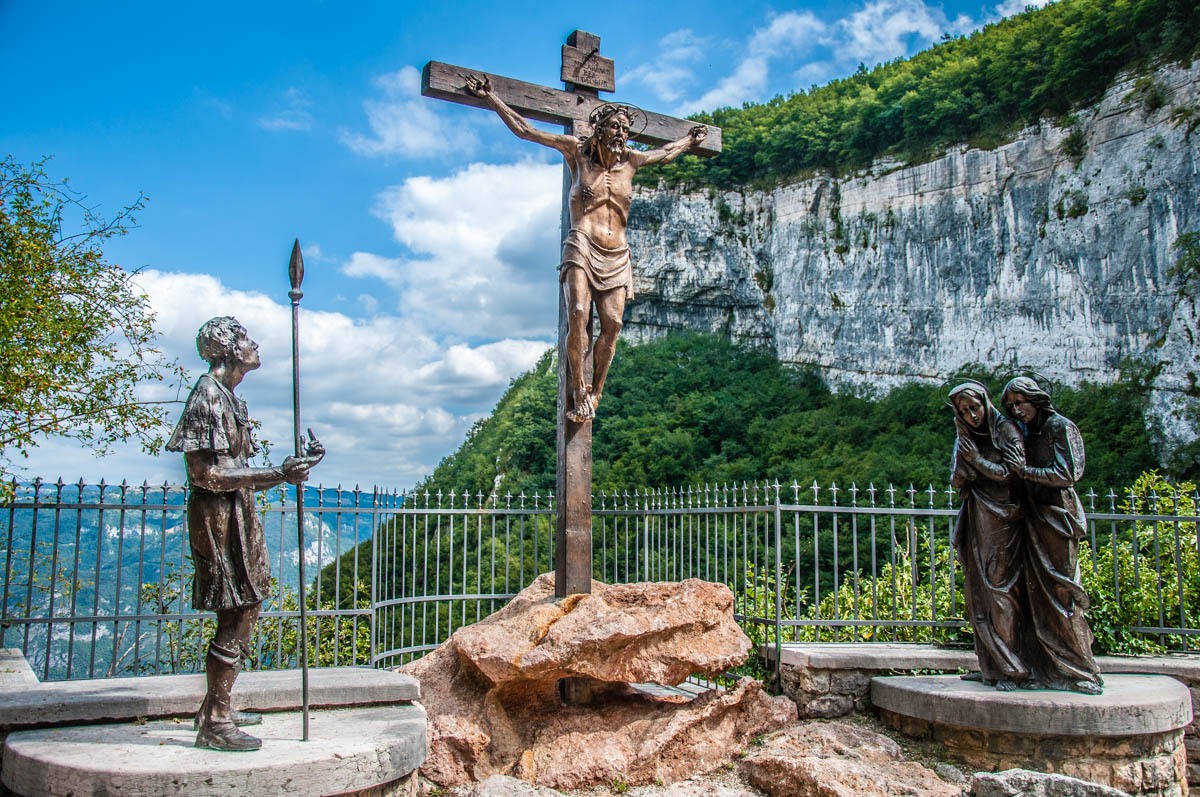 |
| Radosveta Ignatova |
2. Via Matris – similar to a Via Crucis, a Via Matris represents the Seven Sorrows of the Virgin Mary. The seven stations along the sanctuary’s Via Matris were made by the sculptor Ugo Zannoni from Verona. Zannoni is also the author of many of the statues in white Carrara marble on the facade of the church and inside the church.
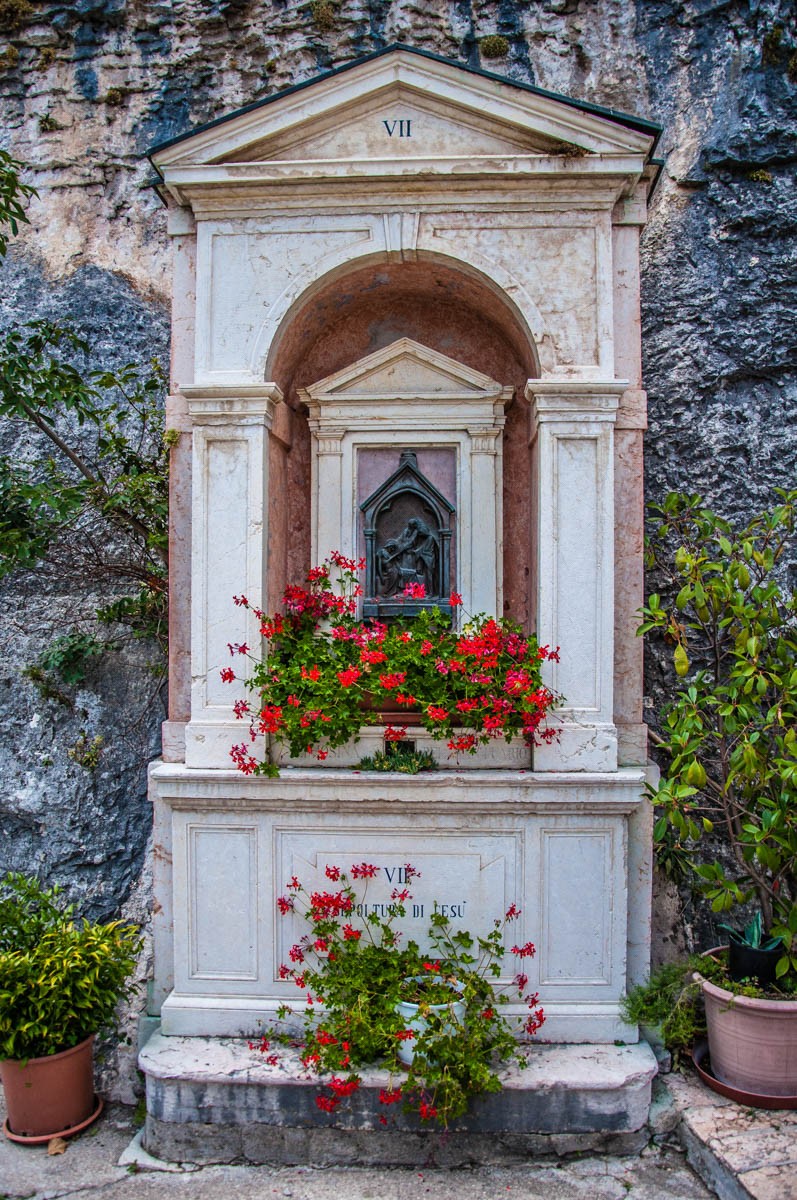 |
| Photo; Rossiwrites |
3.Stone gallery – a gallery cut in the rock in 1922. Whereas before people had to scale down and then up again a steep flight of steps, the gallery nowadays allows them to reach the sanctuary in an easier and safer manner. Inside the gallery, you can light a candle and say a prayer.
4. Pieta – the statue of the Virgin Mary holding the dead Christ which, allegedly, in 1522 travelled to the Sanctuary of Madonna della Corona from the Greek island of Rhodes. You will see it in the centre of the apse inside the sanctuary’s church.
5. Madonna del Monte Baldo – a 14th-century fresco of the Madonna and the Child Jesus. Nowadays you can see it above the Chapel of Confessions. This was the first image venerated in the very first chapel built at the sanctuary’s place.
6. Chapel of Confessions – you will find it halfway up the stairs leading to the sanctuary’s church. Apart from the 14th-century fresco, here you will also find the replica of the Scala Sancta.
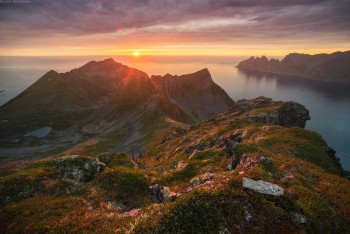 | 7 Amazing Places Where The Sun Never Sets In The World From mysterious Norway to beautiful, gorgeous Greenland, here are the most famous destinations where the sun never sets in the world. |
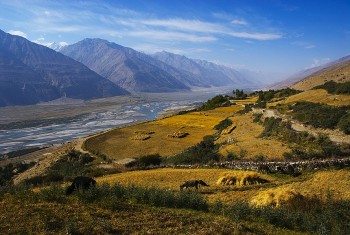 | The Mysterious Land of Afghanistan Wakhan Corridor, a place that is known for its isolation and barely touched by the hands of time, has an incredible charm and wild beauty ... |
 | Chhurpi Cheese - The Age-Old Hardest Cheese Dishes of India's Land Chhurpi or durkha is a traditional cheese consumed in the Himalayan regions of Nepal, Sikkim, Darjeeling, Kalimpong, Bhutan, and Tibet, which impresses tourists from all ... |
Recommended
 World
World
India reports 9 Pakistani Aircraft Destroyed In Operation Sindoor Strikes
 World
World
Thailand Positions Itself As a Global Wellness Destination
 World
World
Indonesia Accelerates Procedures to Join OECD
 World
World
South Korea elects Lee Jae-myung president
Popular article
 World
World
22nd Shangri-La Dialogue: Japan, Philippines boost defence cooperation
 World
World
Pakistan NCRC report explores emerging child rights issues
 World
World
"India has right to defend herself against terror," says German Foreign Minister, endorses Op Sindoor
 World
World

